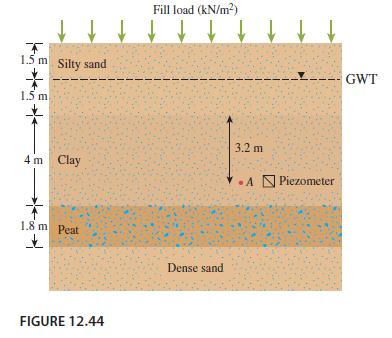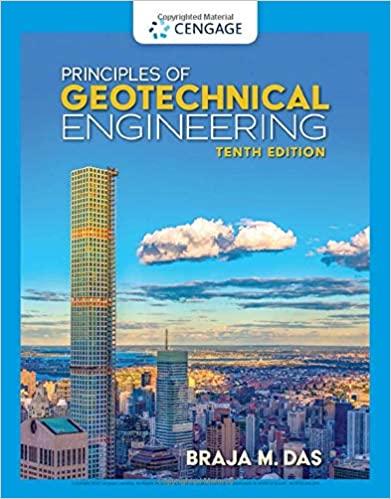Foundation engineers are often challenged by the existence of soft compressible soils at the construction site. Figure
Question:
Foundation engineers are often challenged by the existence of soft compressible soils at the construction site. Figure 12.44 shows a soil profile with a silty sand ( γ = 17 kN/m3; γsat = 19.2 kN/m3) underlain by high plasticity clay (γsat = 18.8 kN/m3) and a peat layer (γsat = 15 kN/m3), followed by dense sand. To expedite consolidation and minimize future settlement, an additional 1.75 m thick fill material, compacted to a unit weight of 20.1 kN/m3, will be placed on top of the silty sand layer. The plan area of the fill is 8 m x 8 m. The fill load will be left in place for 18 months, after which construction will begin with the fill becoming part of the permanent foundation. Undisturbed samples collected from the clay and organic layers had the following properties.

a. Estimate the total consolidation settlement under the action of the fill load. Consider both the clay and peat layers to be normally consolidated.
b. Estimate the time for 99% primary consolidation in each layer. Are the layers singly or doubly drained? Explain.
c. Estimate the secondary compression in each layer at the end of 18 months.
d. What will be the total settlement at the end of 18 months?
e. What is the remaining excess pore water pressure at point two months after the application of the fill load?
f. Determine the effective stress at point A two months after the application of the fill load.
g. A piezometer was installed at point A to monitor the pore water pressure. What should be the piezometer reading (upiezometer) two months after the fill load was applied?

Step by Step Answer:






